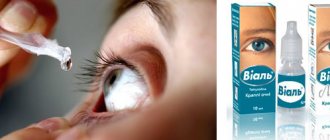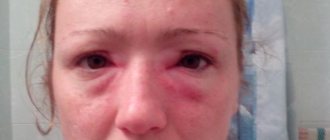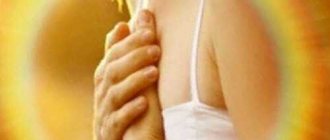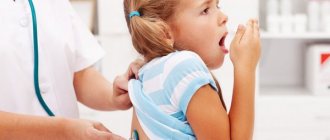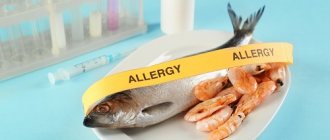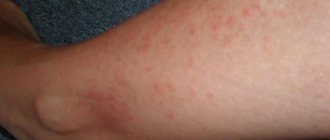When allergies to detergents occur
Allergies to dishwashing, house cleaning and laundry detergents are almost as common as food allergies. Allergies to detergents can occur:
- if you purchased a product that you have not used before;
- in direct contact with the skin of the hands while washing dishes, cleaning or laundry;
- if detergent residue remains on dishes, objects or fabric fibers during washing;
- when inhaling detergent particles during use;
- if the detergent is stored in poorly closed or leaky packaging;
- if the product is stored with food and its particles get into the food.
Prevention and treatment
Treatment of allergies to household chemicals includes the use of a complex of drugs. Therapy depends on the degree of damage and the type of negative manifestations. These can be antihistamine ointments, gels, tablets, drops, creams, herbal decoctions and other products prescribed by a specialist.
If this type of allergy occurs, preventive measures should be taken:
- Do not use a product that causes allergies.
- In case of strong reactions, replace household chemicals with soda, ammonia, laundry soap, mustard, lemon juice or vinegar, hydrogen peroxide, borax, etc.
- Strengthen the immune system (sports, vitamins, proper nutrition, maintaining a daily routine, avoiding stress).
- Carefully read the labels of the products you buy in the store. They should not contain harmful substances.
- Do not use products in the form of powders or aerosols.
- Use gloves when cleaning (it is advisable to wear cotton gloves under rubber ones to avoid latex allergies).
- Increase the rinsing time of the laundry or treat the fabrics with a solution of lemon juice after washing.
- Regularly ventilate the patient's room.
Allergies to household chemicals are a very common disease. Its relief is possible if you consult a doctor at the first signs of the disease and follow all recommendations. Inattention to your health can lead to severe reactions such as Quincke's edema and anaphylactic shock.
Views: 3881
Symptoms of an allergy to detergents
Symptoms of an allergic reaction to detergent may appear within a few hours of exposure. An allergy to detergent can be suspected by the following signs:
- dryness, redness and flaking of the skin;
- skin itches and itch;
- a rash similar to urticaria may occur;
- the appearance of fluid-filled blisters on the body that burst and cause pain.
An allergy to detergents may be accompanied by a reaction from the respiratory tract, such as runny nose, cough, and nasal congestion.
If household chemical residues get inside the body, severe disorders of the functioning of internal organs may occur. Allergies to detergents on the hands and other parts of the body can also occur due to contact with aggressive components of soap, shower gel, cream, and cosmetics.
An allergic reaction to detergents can be dangerous. In severe cases, an attack of bronchial asthma may occur.
Allergies to detergents often occur in people whose work involves constant contact with chemicals. Sellers in household chemical stores, specialists from companies producing cleaning products, workers storing and delivering such products, and cleaners of public premises are susceptible to this. Allergy treatment is complicated by the fact that it is not possible to completely eliminate contact with the irritant.
"Bad" chemistry
“All washing powders and detergents are based on the use of alkylbenzenesulfonates and ethoxylated alkylphenols,” explains UN expert on chemical safety, Honored Professor of Moscow State University Valery Petrosyan . — The latter, when entering the body, are converted into alkylphenols, and these, in turn, have a detrimental effect on the central nervous system, liver, blood composition, etc. Manufacturers usually write the following words on the packaging: “the product contains ionic and nonionic surfactants (surfactants).” These are alkylbenzenesulfonates and ethoxylated octylphenols and nonylphenols. In domestic products their content is usually not indicated. But according to European legislation, there should be no more than 15% of ionic surfactants, and no more than 5% of non-ionic surfactants.”
Question and answer What is better to wash - liquid detergent or powder?
Ethoxylated alkylphenols are also used in products intended for washing heavily soiled surfaces, especially with oils, for washing machines and dishwashers, in all kinds of cleaners, etc. They are also found in shampoos and shower gels.
At the same time, in order to understand the composition of most detergents, cleaning products and cosmetics, you need to get a good chemical education. And since many people do not study chemistry even at school, manufacturers take advantage of this. And consumers earn a minimum of allergies, and a maximum of cancer and endocrine diseases. In addition to alkylbenzenesulfonates, lauryl sulfonate is also very common.
Of course, not everyone will immediately develop an allergy when coming into contact with household chemicals or cosmetics. There are people most predisposed to it.

Life-threatening. 12 household items that can cause cancer Read more
“The likelihood of an allergic reaction increases sharply in people who have a hereditary predisposition (someone in the family suffers from allergic diseases), with weakened immunity, often exposed to stress, taking certain medications, such as antibiotics, abusing alcohol, coffee, spices, “sitting” on strict diets, smoking and regularly carrying out active cosmetic procedures such as facial peeling,” warns the head of the department of immunology and allergology at the RUDN Medical Institute, President of the World Organization for Immunopathology, academician Revaz Sepiashvili .
“Most often, allergic reactions can occur to components such as phosphate compounds, anionic surfactants included in detergents and laundry detergents, formaldehyde used to eliminate mold in bathroom and toilet treatment products, chlorine-containing compounds in bleaches and disinfectants, ammonia included in glass processing compositions, nitrobenzene in furniture or floor polishes, petroleum distillates, which are used in polishes for metal surfaces. In addition, almost any detergent, laundry and disinfectant contains dyes and fragrances, which can also have allergenic properties,” continues Academician R. Sepiashvili.
If, after using a cleaning product or using cosmetics, you start coughing, sneezing, tears flow uncontrollably, and the skin on your hands and face becomes covered with red spots, immediately eliminate contact with the allergen. Take an antihistamine and consult a doctor if necessary.
Article on the topic
Smelly killer. What household chemicals can be deadly?
What to do if you are allergic to detergent
What to do if, after using a detergent, you encounter symptoms suspicious of an allergy:
- stop contact with the detergent immediately;
- wash your hands and face, ventilate the room;
- seal the suspicious product hermetically or remove it from the apartment;
- take an allergy pill;
- rinse the dishes with clean water, rinse things that may have traces of detergent on them;
- If allergy symptoms become dangerous, call an ambulance immediately.
First aid rules
Chemicals surround humans everywhere. You need to be prepared for various unpleasant situations. Poisoning with organic and inorganic solvents clinically manifests itself after 20-30 minutes. The rapid spread of toxins throughout the body requires early treatment.
We recommend reading
- First aid for antifreeze poisoning
- Stages of manganese poisoning
- Symptoms of phenol vapor intoxication
The first aid algorithm depends on the route of entry of the substance.
When ingested
Solvent intoxication requires early initiation of treatment measures. Correctly provided first aid in 90% of cases prevents death from poisoning. It includes the following steps:
- To begin with, the victim is calmed down.
- Give enterosorbents to drink in case of poisoning (activated carbon, Polysorb, Smecta, Enterosorb).
- If the victim has severe vomiting or nausea, Osetron and Metoclopramide are administered intramuscularly.
- To reduce the absorption of toxins into the mucous membranes of the gastrointestinal tract, the patient is given sweet tea. It is strictly forbidden to give the patient milk. This creates favorable conditions for the rapid absorption of harmful substances.
- If the victim is unconscious, turn his head to the side.
- Lack of breathing and pulse is a direct indication for starting cardiopulmonary resuscitation.
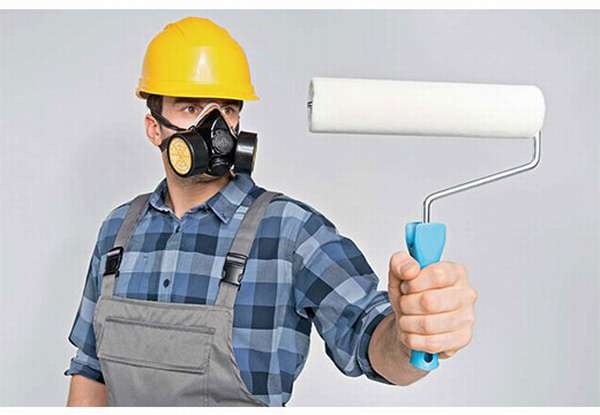
If vapors are inhaled
Intoxication with solvent vapors occurs in domestic and industrial environments. Chemicals cause irritation of the mucous membrane of the nose, larynx, trachea, and bronchi. Timely provision of first aid to the victim prevents the development of bacterial complications in case of poisoning.
- The victim is freed from restrictive clothing.
- If a person is unconscious, you need to try to bring him to his senses. For this, ammonia is used.
- Vapors of humidified oxygen are inhaled.
- Caffeine is administered at reduced pressure.
- Calm the victim and give him sweet tea.
- An ambulance is called.
A patient with inhalation solvent poisoning requires hospital observation and treatment.
After contact with skin
First aid if a dangerous substance gets on the skin is to quickly remove it from the affected area. Household and industrial chemicals irritate the skin and poison it. In 60-80% of cases they cause chemical burns.
To prevent undesirable consequences, the solvent must be washed off the skin with running water and soap. Rinse for half an hour.
After complete removal of residual fluid, apply a sterile bandage and call an ambulance.
If the chemical gets into your eyes, proceed in the same way. It is necessary to rinse the damaged area with plenty of running water, apply a bandage and send the victim to the hospital.
What information is missing from the article?
- List of effective medications
- A detailed overview of traditional methods of treatment
- Professional opinion of a specialist
- Detailed review of antidotes
How can you replace synthetic detergents if you are afraid of allergies?
There are many options for replacing SMS with hypoallergenic homemade products.
Laundry soap perfectly replaces most dishwashing, laundry and cleaning products.
If you make a soap-soda solution, the detergent will be even more effective. The only disadvantage of a self-prepared soap-soda solution is that it is not suitable for washing in a washing machine.

It is better to machine wash using specially produced hypoallergenic products without synthetic components.
Vinegar is good for cleaning the house. It acts as an antifungal agent - it destroys mold in the bathroom and kitchen.
A solution of food grade citric acid has a similar effect. Acid copes with plaque on the toilet and fungus in the bathroom.
Preventive measures
The use of any dyes must be carried out strictly according to the instructions. Try to never get paint in your eyes. Before using formulations intended for eyelashes, eyebrows, and hair, you should test for a possible allergic reaction. To do this, just apply a small amount of the product to the elbow. If redness, itching and swelling do not appear, then you can use this paint.
If an allergy is caused by wall paints, you must avoid being in the rooms where renovations are being carried out; there is a characteristic odor. If you have to work with such substances, you should protect your eyes and respiratory organs. To do this, you should use glasses and painting respirators . The room in which the compositions are applied must be well ventilated.
Preventing sun allergies
During peak sun hours, between 10 a.m. and 4 p.m., try to stay in the shade.
- Use a sunscreen that is SPF 30 or higher, broad-spectrum (UVA and UVB protection) and water-resistant.
- Apply daily to already affected areas of the skin a cream based on aloe juice, centella asiatica, azulene, dexpanthenol - these products moisturize, restore the epidermal barrier and reduce burning. Locally - that is, on the affected areas - you can use H-1 histamine receptor blockers: diphenhydramine, chloropyramine, cetirizine, the levorotatory isomer of cetirizine, desloratadine.
- Wear sunglasses and clothing that covers your body as much as possible: long-sleeved shirts and wide-brimmed hats will protect your skin from sun exposure.
- Avoid thin fabrics with loose threads - ultraviolet rays can pass through them.
- Don't forget about special areas - the area around the eyes, lips and ears. Protective cream must be applied to them as well. Choose a product designed specifically for specific areas with an SPF of 30 or higher.
- Wear sunglasses with UV protection.
- Carotenoids, such as β-carotene, found in carrots, provide protection against ultraviolet radiation. These compounds penetrate the skin after digestion. People with high levels of carotenoids in their skin are less susceptible to sunburn. However, consuming large amounts of carotenoids can change your skin color.
©
How to protect yourself?
“We need to live simpler,” says Valery Petrosyan. - Oddly enough, the advice will be to wash your hair and body with regular baby soap. But who will do it? They will tell me: do we live in caves? But what about beautiful bottles with multi-colored aromatic solutions called shampoos, body washes, heels, etc.? And business takes advantage of people’s illiteracy in chemistry and their desire for diversity, the desire to appear modern, and every day offers so-called “new products.”
By the way, you can also wash with ordinary laundry soap, rubbed into fine powder. If you already use washing and cleaning powders, do not leave the packages open. “Our people open bags and jars of powders, place them under a hot bath or hot pipes in the bathroom, and happily breathe in this “chemistry” while lying in the bath. What kind of health can we talk about after this?”
Features of skin allergies in children
Children's skin is very sensitive, so rashes are not uncommon. It is especially important to be able to distinguish them from skin diseases, since in infants the development of allergies occurs rapidly.
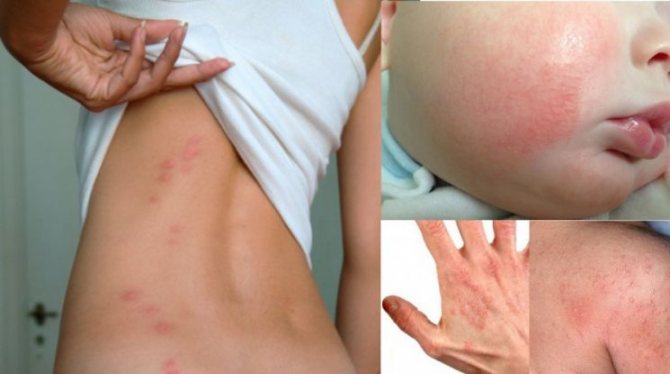
This is what allergies look like in infants. The most common skin reaction appears as follows:
- pustules, vesicles - small blisters filled with bloody fluid;
- papules - similar to a rash without the formation of blisters;
- plaques – tubercles of various shapes and colors;
- red spots;
- blisters with infiltrate, which the baby can scratch and cause infection.
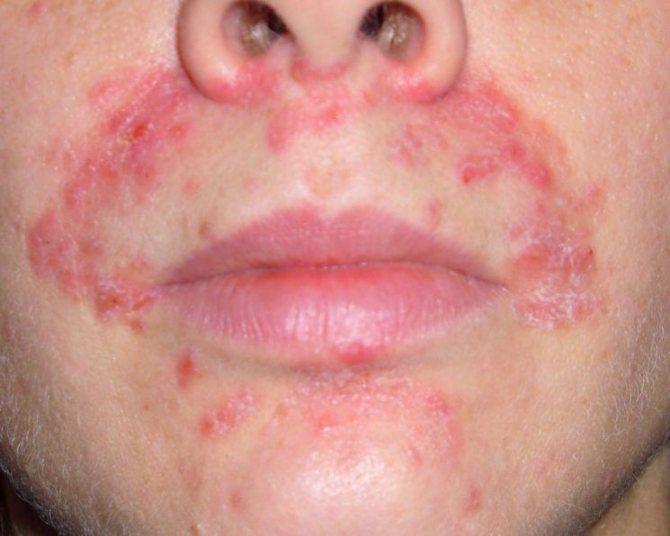
What does skin irritation look like?
Allergies are characterized by the appearance of spots on the body of various shapes and colors. Look at the photo to see what a skin allergy looks like.
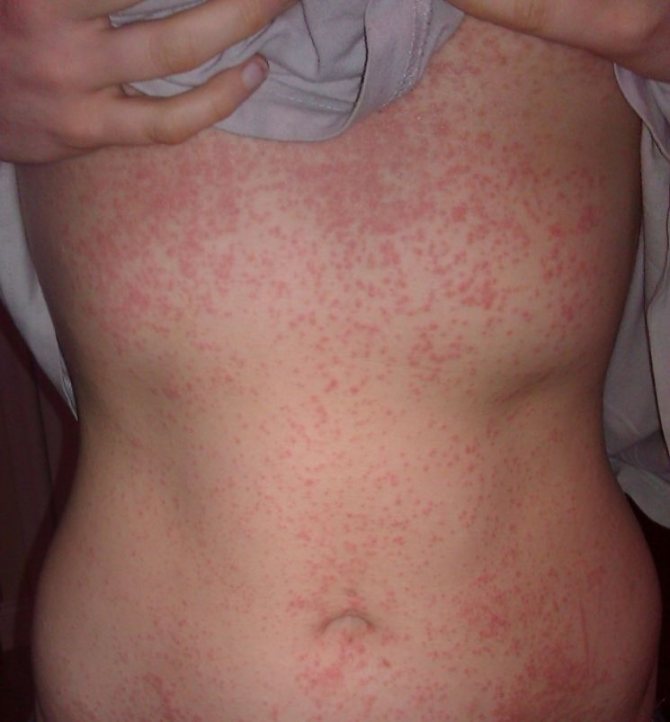
Red spots, called urticaria, occupy a large area on the skin. They appear and disappear suddenly in one place, moving to another place, itching and swelling. Pityriasis rosea resembles a small rash and forms on the chest, abdomen, and arms.
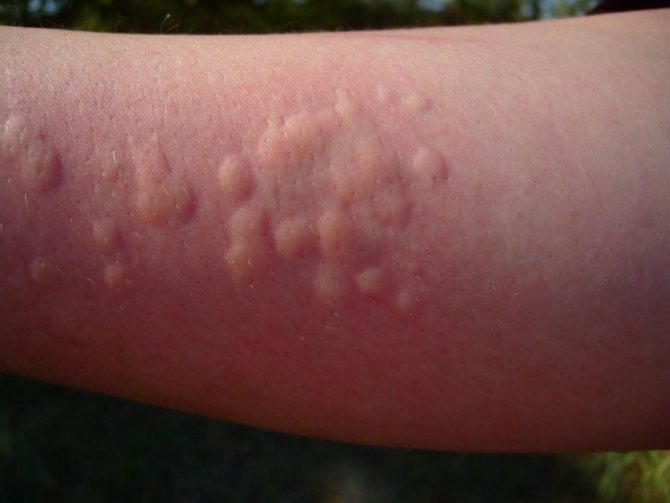
If blisters with infiltrate or purulent fluid appear on the body, then this is an inflammatory process. After some time, the blisters open and a crust forms on the damaged epithelium, which dries and disappears.
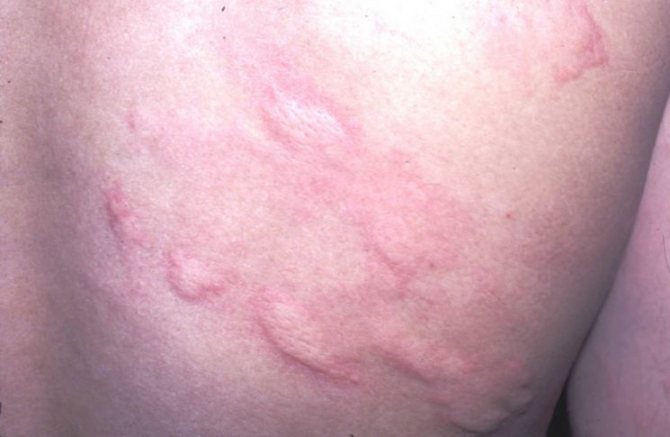
What happens in the body during sun allergy?
Scientifically speaking, when exposed to sunlight, a substance called histamine is released. It is produced by cells of the skin and internal organs in response to contact with an allergen, a foreign object that irritates the skin. This mechanism is called “antigen-antibody”.
To explain it metaphorically, an antibody is a skin cell that can be compared to a metal, while an antigen is an allergen, it is like a magnet. The metal attracts the magnet, and as a result, an antigen-antibody complex is formed, and because of this interaction, histamine is released. And as a result of this process, we see rashes, itching and other manifestations of allergies on the skin.
How is sun allergy different from prickly heat?
Heat rash occurs when pores become clogged and sweat accumulates under clothing or blankets. The main difference is that prickly heat can appear without exposure to sunlight. In hot, humid weather, heat rash can appear on any part of the body, especially in the folds of the skin. Most often, prickly heat appears under the breasts, in the groin, in the armpit folds and on the inner thighs.
Miliaria can be found at any time of the year. It occurs in babies when they are wrapped in blankets or dressed too warmly. Miliaria goes away on its own within a few days, while solar urticaria usually lasts only a few hours.
